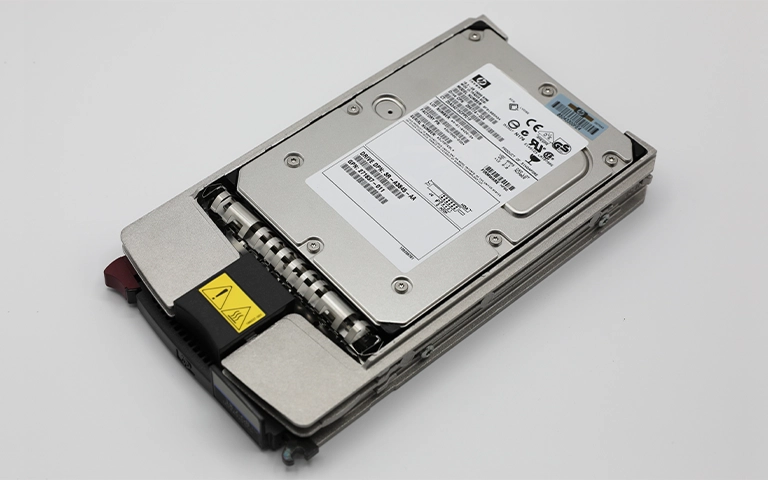When it comes to data storage and protection, RAID (Redundant Array of Independent Disks) is a widely used technology that offers various levels of performance and fault tolerance. Among the different RAID levels, RAID 0 and RAID 1 are two commonly utilized setups, each with its own unique advantages and drawbacks. In this blog, we’ll explore the differences between RAID 0 and RAID 1, covering read/write speed, fault tolerance, storage capacity, and data redundancy.
RAID 0 Explained
RAID 0, known as striping, boosts data storage performance by distributing data across multiple disks. It dramatically increases read and write speeds by processing data simultaneously, which is ideal for high-speed tasks like video editing and large databases.
In RAID 0, data is split into blocks. These blocks are then read or written across disks simultaneously, allowing for quicker data access than using a single disk.
While RAID 0 boosts performance, it sacrifices redundancy. If one disk fails, all data on the array could be lost.
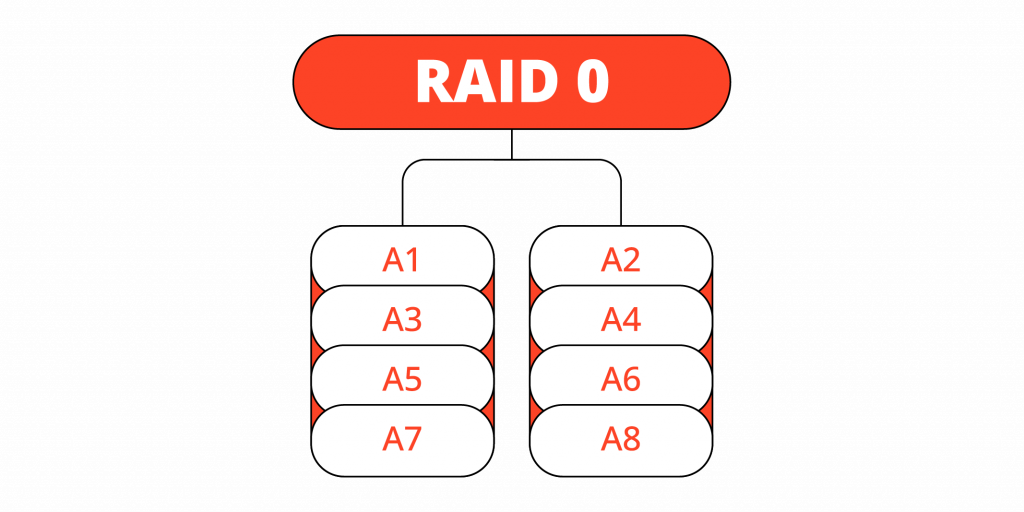
In RAID 0, data isn’t duplicated or mirrored, risking complete data loss with any disk failure. This significant lack of fault tolerance in RAID 0 makes regular backups essential for users relying on this setup for data storage.
RAID 1 Explained
RAID 1, also known as mirroring, takes a different approach to data storage compared to RAID 0. This setup focuses on redundancy and fault tolerance rather than performance improvement. In RAID 1, data is copied identically on two or more disks.
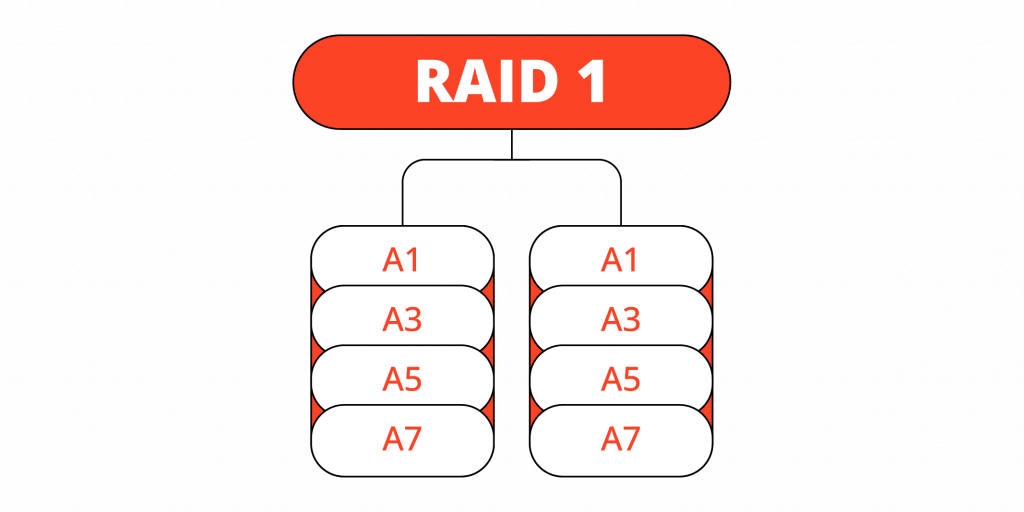
This ensures that if one disk fails, data remains accessible from the other disks, offering robust data protection.
While RAID 1 does not improve read and write speeds as RAID 0 does, it offers the advantage of redundancy, making it ideal for critical data storage applications where data loss cannot be afforded.
The trade-off for this level of protection is that the effective storage capacity is halved, as each piece of data is stored on two disks. Nonetheless, RAID 1 remains a popular choice for businesses and individuals who prioritize data safety over storage efficiency or speed.
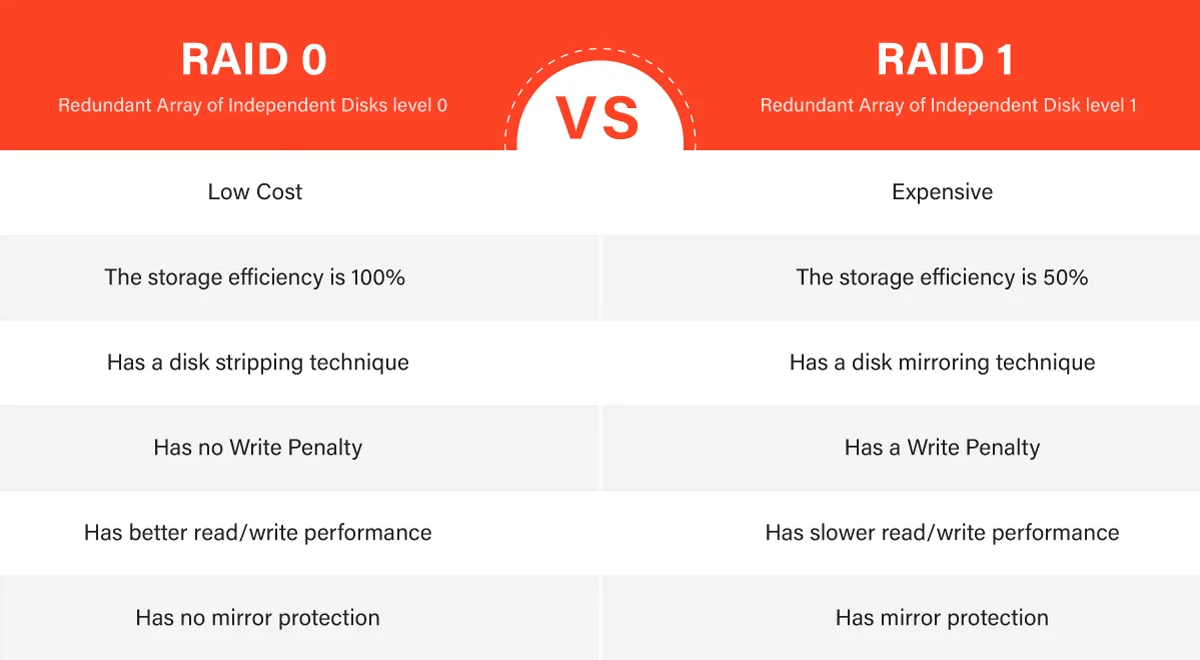
Performance: RAID 0 - Striped Disk Array
RAID 0, also known as a striped disk array, operates by dividing data into blocks and distributing them across multiple drives in the array. The primary aim of RAID 0 is to enhance performance, particularly in terms of read and write speeds.
By spreading the data across multiple disks, RAID 0 enables concurrent data access, resulting in faster read and write operations.
This makes it an ideal choice for applications that require high-performance data processing, such as video editing, gaming, and database management.
In a RAID 0 configuration, the data is split into equal-sized blocks, which are then written to separate drives simultaneously.
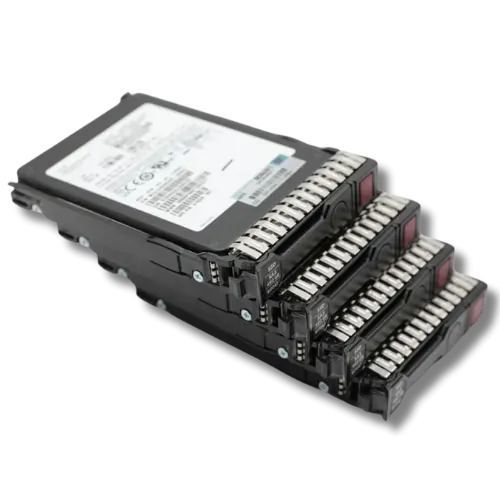
This parallelization of data access and storage allows for improved throughput and reduced latency. The more drives added to the RAID 0 array, the higher the potential for increased performance. However, it’s important to note that RAID 0 does not provide any data redundancy or fault tolerance.
Fault Tolerance: RAID 1 - Mirrored Disk Array
While RAID 0 excels in performance, it lacks fault tolerance. This is where RAID 1 comes into play. RAID 1 focuses on data redundancy and fault tolerance by creating a mirrored disk array. In this setup, each drive in the array maintains an identical copy of the data.
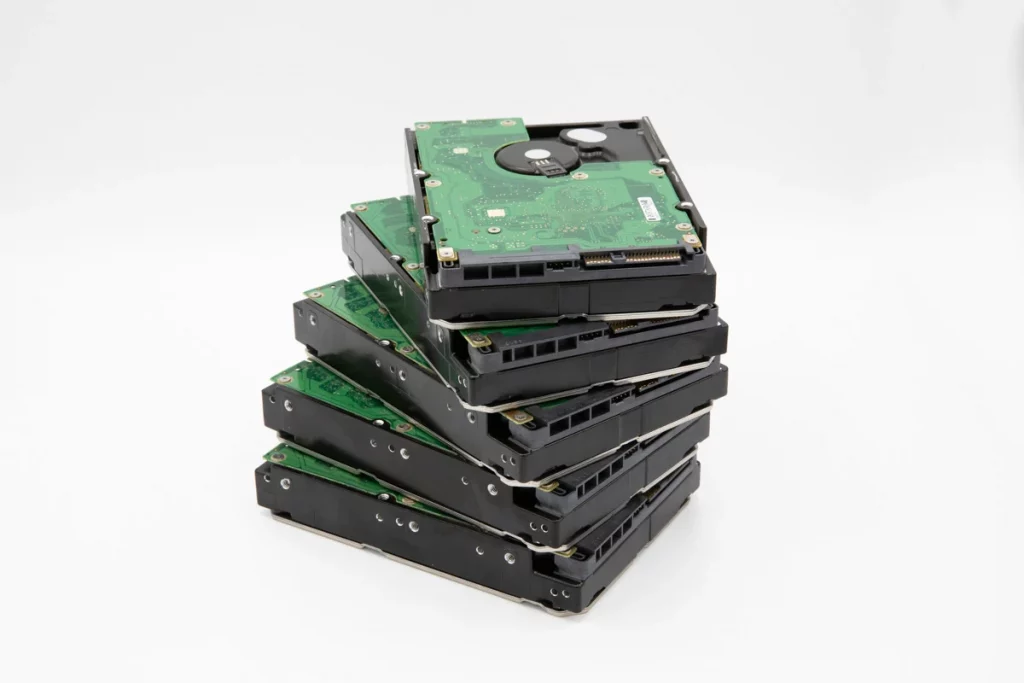
So, if one drive fails, the redundant drive can seamlessly take over, ensuring continuous operation without data loss.
In a RAID 1 configuration, every write operation is duplicated on both drives, resulting in increased reliability. This redundancy provides a safety net against data loss due to drive failures.
RAID 1 is particularly suitable for applications that require high data reliability, such as critical databases, financial systems, and file servers. Although RAID 1 sacrifices storage capacity due to mirroring, it offers peace of mind and ensures that your data remains intact even if one of the drives fails.
Storage Capacity: RAID 0 - Combined Drives
RAID 0 combines the storage capacity of multiple drives in the array. When data is distributed across multiple disks, the overall storage capacity of the RAID 0 array increases. For example, if you have four 500GB drives in a RAID 0 array, the total storage capacity would be 2TB. This makes RAID 0 an attractive option for users who require a large amount of storage space without compromising on performance.
RAID 1 trades storage capacity for data redundancy, mirroring each drive so total capacity equals one drive. For example, four 500GB drives in RAID 1 yield 500GB storage, prioritizing data integrity over space.
RAID 0, or striping, enhances data storage performance by spreading data across multiple disks. It significantly boosts read and write speeds by processing data in parallel, perfect for tasks requiring high speed like video editing and managing large databases
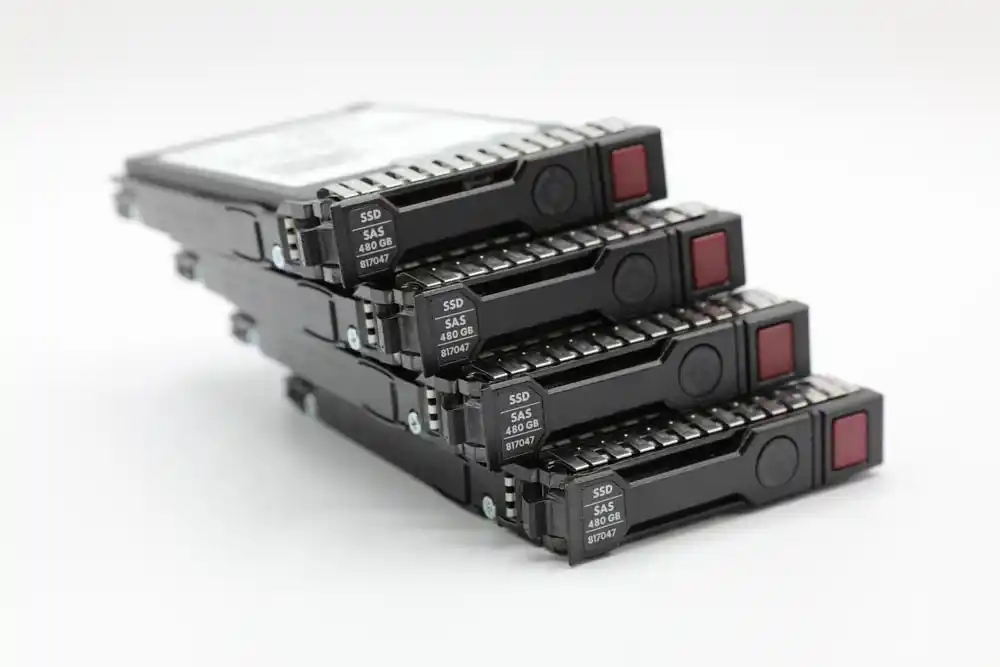
RAID 0 splits data into blocks for simultaneous reading/writing across disks, speeding up access compared to a single disk. Choosing between RAID 0 and RAID 1 depends on your needs. RAID 0 offers high performance and large storage but risks data loss if a drive fails.
RAID 1, however, prioritizes data safety and fault tolerance over performance and size.It’s crucial to remember that RAID isn’t a replacement for regular backups. Despite RAID’s redundancy and fault tolerance, regularly backing up important data is advised for added protection against failures or surprises.
Frequently Asked Questions
Can I mix different drive sizes in a RAID 0 or RAID 1 array?
In a RAID 0 array, you can mix different drive sizes; however, the overall storage capacity will be limited to the size of the smallest drive in the array. On the other hand, RAID 1 requires identical drive sizes, as each drive mirrors the data of the other.
Can I use RAID 0 or RAID 1 with SSDs?
Yes, both RAID 0 and RAID 1 can be used with SSDs. In fact, SSDs can further enhance the performance benefits of RAID 0 due to their faster data access speeds. SSDs in a RAID 1 configuration can provide increased data redundancy and fault tolerance as well.
Can I migrate from RAID 0 to RAID 1 without losing my data?
Unfortunately, moving from RAID 0 to RAID 1 requires backing up your data first. Changing RAID levels typically means rebuilding the array and starting the new setup, leading to data deletion. Thus, backing up your data before migration is essential.
Can I have a combination of RAID 0 and RAID 1 in the same system?
Yes, it is possible to have a combination of RAID 0 and RAID 1 in the same system. This is known as a hybrid RAID setup. It involves creating separate arrays with different RAID levels to meet specific performance and redundancy requirements for different sets of data.
Can I change my RAID configuration after setting it up?
Yes, it is possible to change your RAID configuration after it has been set up, but it typically requires backing up your data and rebuilding the array. It’s crucial to understand the potential risks involved and have a proper backup plan in place before making any changes to your RAID configuration.
Related Blogs
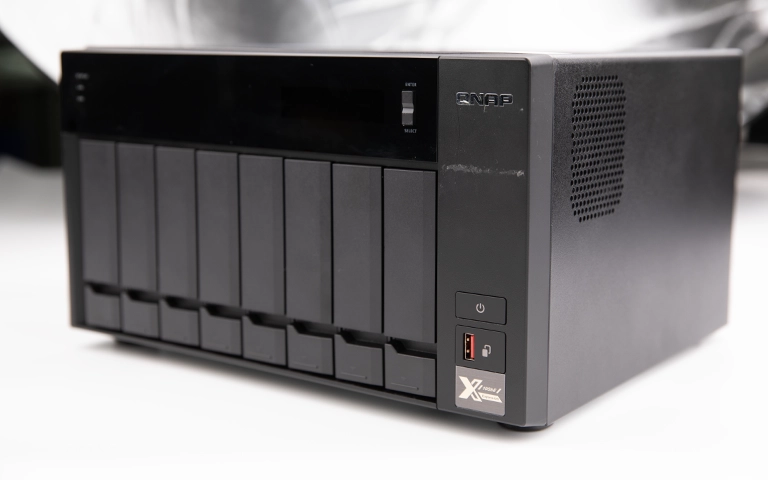
Migrate RAID 1 to RAID 5 on QNAP NAS
